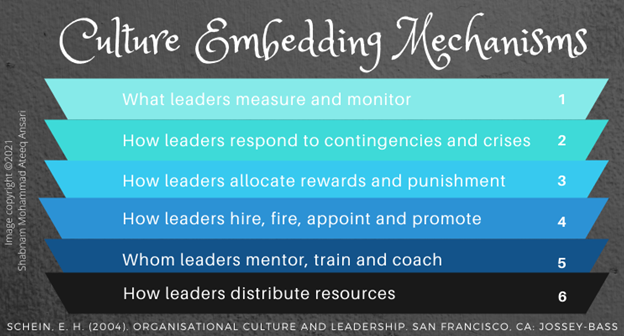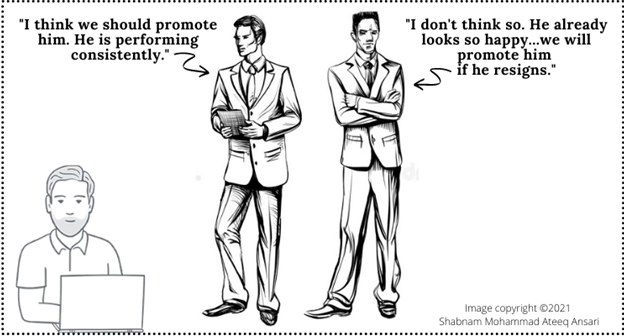The scenario:
You have assessed that organizational culture is affecting performance and morale. You set the ball rolling on a culture change program.
Here are three reasons it may fail:
- The HR department hires for culture fit even when culture is a problem
- The culture issue originates from higher levels of management
- You think power dynamics and sociopathic behavior are a part of culture
If the HR department recruits candidates that fit the culture, you fight a losing battle. Matt Bush says – hire for culture add, not fit. This is easier said than done. In over a decade of evaluating candidates, I have placed culture fit as a key criterion more times than I would admit.
When culture issues originate at the top, the progress on change initiatives will be akin to spinning wheels in the sand. You need a champion on the executive team to effect culture shift.
Power dynamics and sociopathic behavior impact organizational culture, but are not a part of culture. If these are a significant component of the culture ‘issue’, then it’s not a culture issue. Sociopaths thrive at the workplace because the behaviors are interpreted as ‘leadership’. The individuals may be a part of the executive team (or protected by someone at the top). Power dynamics emerge from give-and-take relationships involving psychological contracts. You are a part of the power matrix and must ‘play the power game’ to effect change.
Research and writings discuss the manageability of culture change. One position is that top management can change organizational culture under certain conditions[1]. The second view is that culture is beyond control. According to Ogbonna and Harris, efforts to change culture may cause superficial changes of behaviour, but leave deeper levels of culture untouched[2]. The third is that employees do not respond predictably, but change takes place when the management exercises influence[3].
- Drop the cause – if you aren’t being paid, supported or rewarded for the culture change program. According to Hofstede[4], changing the organizational culture is an uphill task. This is because culture manifests as ways of thinking, values and ideas rather than concrete and tangible parts of an organization.
- Quit the job – if the interplay of culture, power dynamics & sociopathic behavior consistently unravels your accomplishments or morale. According to Heracleous and Langham[5], “Culture change requires, at minimum, that the normally hidden and less conscious assumptions are made explicit and targeted”. The efforts to change culture increase your vulnerability to sabotage, political manoeuvres and hostility.
- Mobilize – a task team if you have buy-in from the executive team for the change program. Culture change requires focused management in the long term. Solo is not the way to go. As a change leader, beware of working with culture as an ‘it’[6]. Change managers may seek to change ‘it’ or ‘others’ rather than ‘us’.
The question is, how do leaders relay and embed culture?
Charisma – the ability to capture attention, communicate values and influence action[7][8][9]– is a tool. But leaders who have it are few, and its impact is difficult to measure[10].Change leaders use embedding and reinforcing mechanisms[11] to drive culture change. These are tangible aspects of culture that create the ‘climate’ of the organization[12][13]:
Embedding Mechanisms
- What leaders measure and monitor (and what they don’t pay attention to)
- How leaders respond to contingencies and crises
- How leaders allocate rewards and punishment
- How leaders hire, fire, appoint and promote
- Whom leaders mentor, train and coach
- How leaders distribute resources
Reinforcing Mechanisms
- Organizational matrix and hierarchy
- Processes and systems
- Elements of physical spaces
- Legacy and stories of people and events
- ‘How-things-are-done-here’ of the organization
- Formal statements of mission, vision and values

Learn about culture embedding mechanisms, interventions and case studies in the book Organisational Culture and Leadership by Edgar Schein.

“The only thing of real importance that leaders do is to create and manage culture. If you do not manage culture, it manages you, and you may not even be aware of the extent to which this is happening.” ~ Edgar Schein
[1] Palmer, I., Dunford, R. and Akin, G. (2009). Managing Organizational Change (2nd edn.).
Boston, MA: McGraw-Hill.
[2] Ogbonna, E. and Harris, L. (1998). ‘Managing Organizational Culture: Compliance or
Genuine Change?’. British Journal of Management, 9: 274.
[3] Alvesson, M., & Sveningsson, S. (2016). Changing Organizational Culture – Cultural change work in progress. New York, NY: Routledge. Page 46.
[4] Alvesson, M., & Sveningsson, S. (2016). Changing Organizational Culture – Cultural change work in progress. New York, NY: Routledge. Page 41.
[5] Alvesson, M., & Sveningsson, S. (2016). Changing Organizational Culture – Cultural change work in progress. New York, NY: Routledge. Page 47.
[6] Alvesson, M., & Sveningsson, S. (2016). Changing Organizational Culture – Cultural change work in progress. New York, NY: Routledge. Page 181.
[7] Bennis, W., & Nanus, B. (1985). Leaders. New York: HarperCollins.
[8] Conger, J. A. (1989). The charismatic leader. San Francisco, CA: Jossey-Bass.
[9] Leavitt, H. J. (1986). Corporate pathfinders. Homewood, IL: Dow Jones-Irwin.
[10] Schein, E. H. (2004). Organisational Culture and Leadership. San Francisco, CA: Jossey-Bass. Page 245.
[11] Schein, E. H. (2004). Organisational Culture and Leadership. San Francisco, CA: Jossey-Bass. Page 246.
[12] Schneider, B. (Ed.) (1990). Organizational climate and culture. San Francisco, CA: Jossey-Bass.
[13] Ashkanasy, N. M., Wilderom, C.P.M., & Peterson, M. F. (Eds.) (2000). Handbook of organizational culture and climate. Thousand Oaks, CA: Sage.

